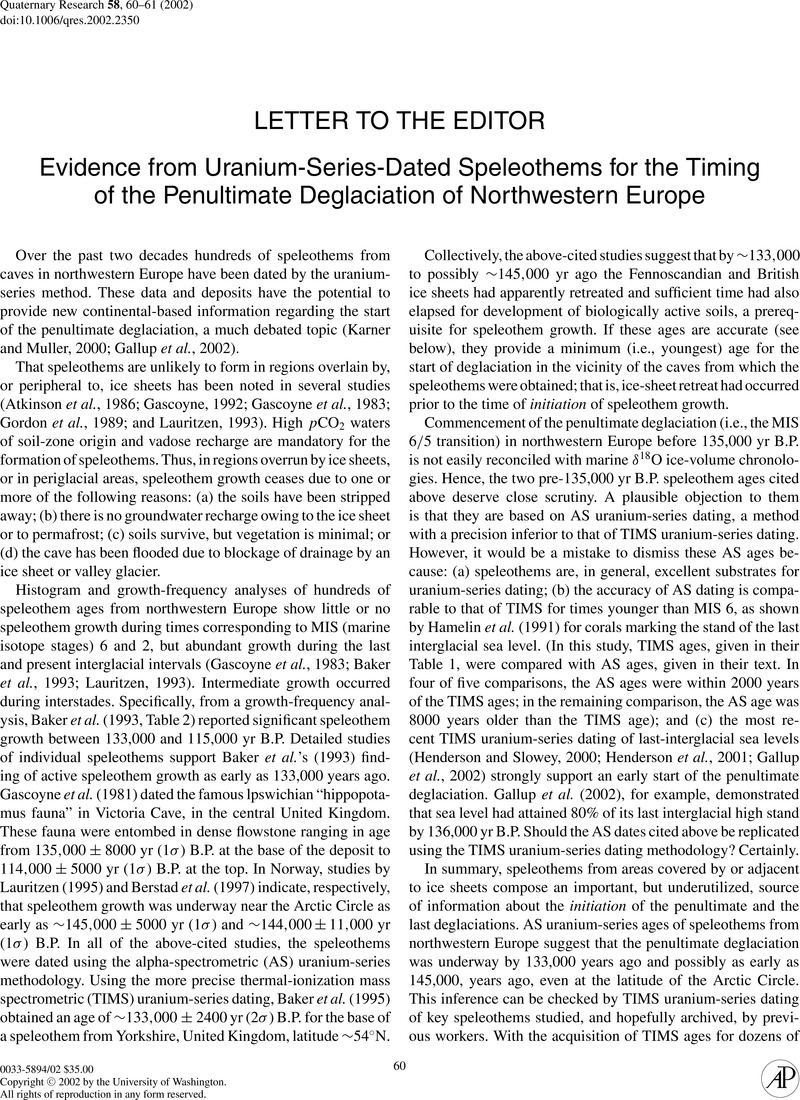Crossref Citations
This article has been cited by the following publications. This list is generated based on data provided by Crossref.
Kukla, George J.
Bender, Michael L.
de Beaulieu, Jacques-Louis
Bond, Gerard
Broecker, Wallace S.
Cleveringa, Piet
Gavin, Joyce E.
Herbert, Timothy D.
Imbrie, John
Jouzel, Jean
Keigwin, Lloyd D.
Knudsen, Karen-Luise
McManus, Jerry F.
Merkt, Josef
Muhs, Daniel R.
Müller, Helmut
Poore, Richard Z.
Porter, Stephen C.
Seret, Guy
Shackleton, Nicholas J.
Turner, Charles
Tzedakis, Polychronis C.
and
Winograd, Isaac J.
2002.
Last Interglacial Climates.
Quaternary Research,
Vol. 58,
Issue. 1,
p.
2.
Brook, George A.
Ellwood, Brooks B.
Railsback, L. Bruce
and
Cowart, James B.
2006.
A 164 ka record of environmental change in the American Southwest from a Carlsbad Cavern speleothem.
Palaeogeography, Palaeoclimatology, Palaeoecology,
Vol. 237,
Issue. 2-4,
p.
483.
Pons-Branchu, Edwige
Hamelin, Bruno
Losson, Benoit
Jaillet, Stephane
and
Brulhet, Jacques
2010.
Speleothem evidence of warm episodes in northeast France during Marine Oxygen Isotope Stage 3 and implications for permafrost distribution in northern Europe.
Quaternary Research,
Vol. 74,
Issue. 2,
p.
246.
Drysdale, Russell N.
Paul, Bence T.
Hellstrom, John C.
Couchoud, Isabelle
Greig, Alan
Bajo, Petra
Zanchetta, Gianni
Isola, Ilaria
Spötl, Christoph
Baneschi, Ilaria
Regattieri, Eleonora
and
Woodhead, Jon D.
2012.
Precise microsampling of poorly laminated speleothems for U-series dating.
Quaternary Geochronology,
Vol. 14,
Issue. ,
p.
38.
Railsback, L. Bruce
Liang, Fuyuan
Vidal-Romaní, Juan Ramón
Garrett, Katelynn Blanche
Sellers, Rachel C.
Vaqueiro-Rodríguez, Marcos
Grandal-d'Anglade, Aurora
Cheng, Hai
and
Edwards, R. Lawrence
2017.
Radiometric, isotopic, and petrographic evidence of changing interglacials over the past 550,000 years from six stalagmites from the Serra do Courel in the Cordillera Cantábrica of northwestern Spain.
Palaeogeography, Palaeoclimatology, Palaeoecology,
Vol. 466,
Issue. ,
p.
137.





